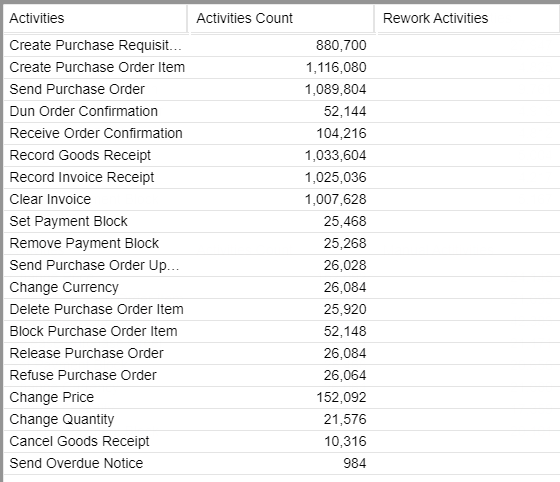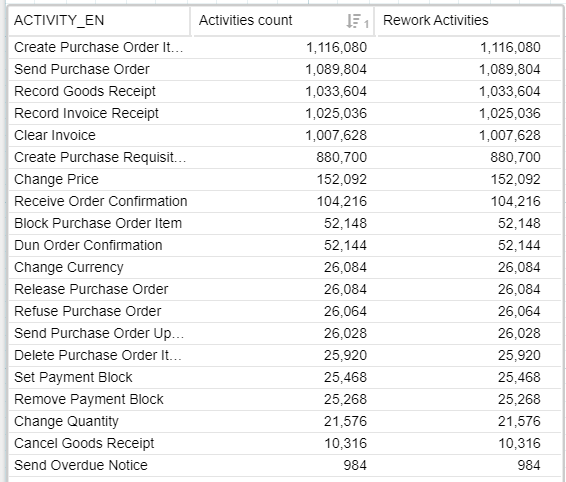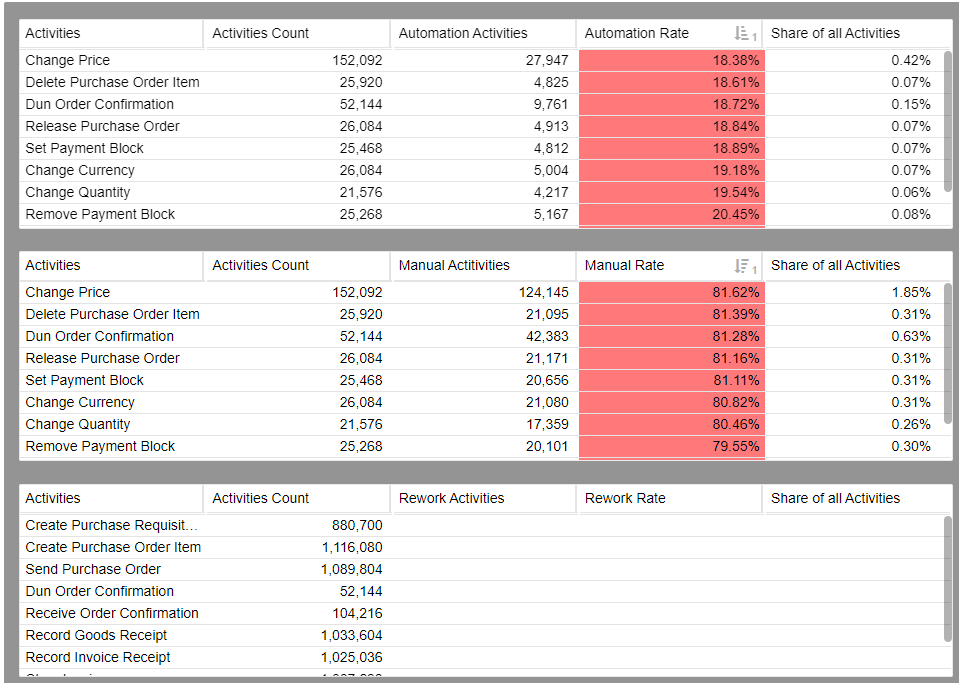Both the functions are used to retrieve rework, what is the difference ?
CALC_REWORK Vs INDEX_ACTIVITY_TYPE
 +5
+5Best answer by david.beche12
Hi @Raman Silotia
you are right that both can be used to calculate KPIs related to rework, but the actual functions do different things.
The main difference is that CALC_REWORK calculates "rework" on Case-Level. Just using CALC_REWORK() just returns the number of Activities per case (which, I agree, is not really rework), but when you pass a filter condition to select a specific activity (e.g., CALC_REWORK("Activities"."Activity" = 'X') ), then it will return the number of times this activity occurs per case (i.e., how often it was reworked).
INDEX_ACTIVITY_TYPE, however, returns the result not on Case-level, but on Activity level. For each row in the Activity table, it returns how often this Activity has already occurred in that case so far.
So filtering on a specific Activity, and calculating the maximum INDEX_ACTIVITY_TYPE value per Case would give you the same result as the CALC_REWORK would return for this Activity.
For more information on both functions, including examples and syntax descriptions, please have a look at the documentation pages: https://docs.celonis.com/en/calc_rework.html, https://docs.celonis.com/en/index_activity_type.html
Let me know if you have more questions about these functions.
Best
David
Enter your E-mail address. We'll send you an e-mail with instructions to reset your password.







